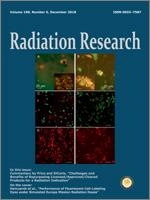Plutonium is a radiologically significant alpha-particle emitter. The potential for adverse health effects from internal exposures due to plutonium intakes has been recognized since the 1940s. The workforce of the Sellafield nuclear facility (Cumbria, UK), includes one of the world's most important groups of plutonium-exposed workers for studying the potential health risks of this internal exposure. However, for several hundred workers employed at the start of plutonium work at the facility (1952–1963), historical monitoring records based on measurements of urinary excretion of plutonium are not sufficiently reliable to provide the accurate and unbiased exposure assessments needed for epidemiological studies. Consequently, these early workers have had to be excluded from such studies, significantly reducing their power. We constructed a population-specific quantitative job exposure matrix (JEM) to estimate the average intakes of “typical plutonium workers” in this period, from 1952–1963, and assessed its validity and sensitivity to exposure assessment decisions. We conducted internal cross-validation using an a priori 10% extracted sample to evaluate reliability of estimates, explored JEM sensitivity to assumptions in the exposure assessment, and assessed the impact of uncertainty in urinalysis measurements on the precision of annual intake estimates using Markov Chain Monte Carlo (MCMC) methodology. Pairwise correlations (RP) of estimated (JEM) and measured (10% sample) annual intakes were moderate to high (RP > 0.4) for 10 out of 13 JEM groups, while absolute differences were <20% for 11 out of 13 JEM groups. There was little evidence of a temporal trend in correlations (P = 0.13) or absolute differences (P = 0.34). The median JEM-derived cumulative intake of 95.2 (IQR, 55.0–130.0) Bq was comparable to those based on alternative assumptions in the exposure assessment (median range, 95.2–100.0 Bq; 75th percentiles, 130.0–146.0 Bq). Measurement error simulation resulted in a 40–60% reduced median cumulative intake but higher maximum cumulative intakes. The JEM finds a balance between reliability and precision that makes it useful for epidemiological purposes and is relatively insensitive to specific choices in the exposure assessment. This JEM will allow the inclusion of workers with longest follow-up and who could not be included up until now in epidemiological studies without introducing significant bias.
How to translate text using browser tools
6 November 2018
Construction, Validation and Sensitivity Analyses of a Job Exposure Matrix for Early Plutonium Workers at the Sellafield Nuclear Site, United Kingdom
Frank de Vocht,
Anthony Riddell,
Richard Wakeford,
Hanhua Liu,
David MacGregor,
Christine Wilson,
Mark Peace,
Jacqueline O'Hagan,
Raymond Agius





